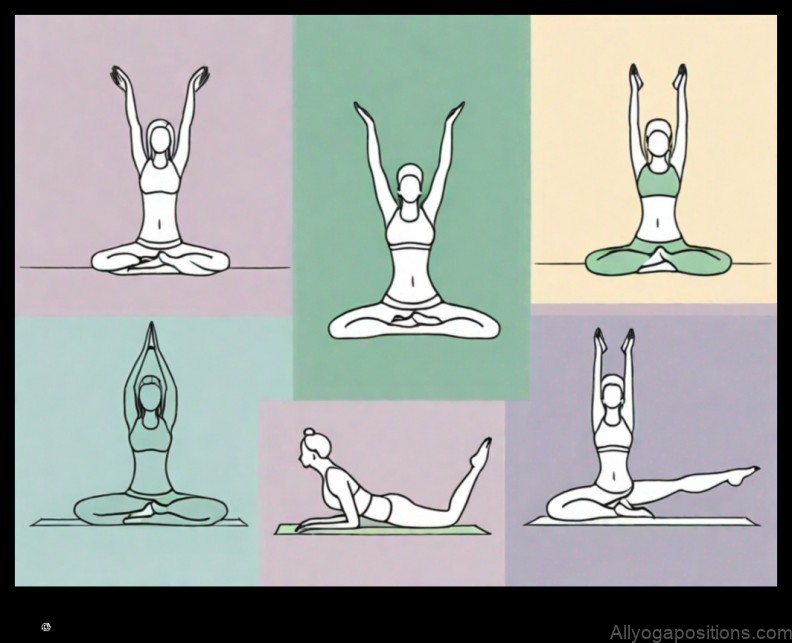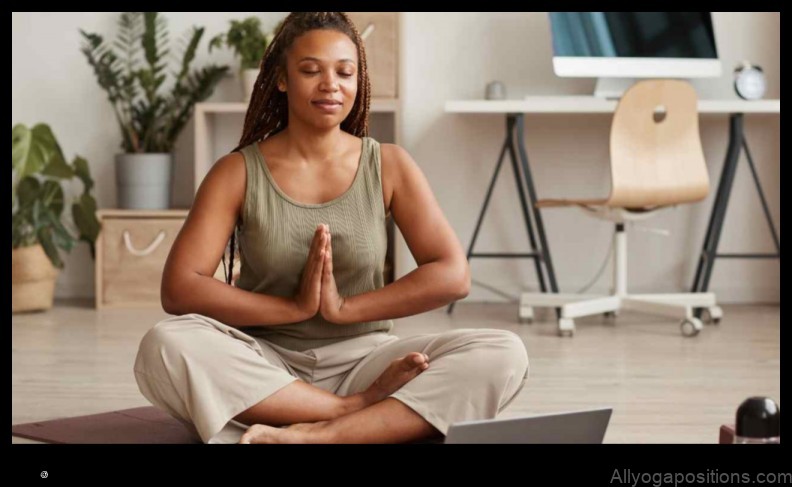
Yoga for Emotional Resilience: Introduction
Yoga is a mind-body practice that has been shown to have many benefits for physical and mental health. It can help to reduce stress, improve mood, and increase relaxation. Yoga can also help to improve emotional resilience, which is the ability to cope with stress and difficult emotions in a healthy way.

What is Emotional Resilience?
Emotional resilience is the ability to cope with stress and difficult emotions in a healthy way. It involves being able to tolerate difficult emotions without becoming overwhelmed or distressed. Emotionally resilient people are able to bounce back from setbacks and challenges, and they are able to maintain a positive outlook on life.
Benefits of Yoga for Emotional Resilience
Yoga has been shown to have many benefits for emotional resilience, including:
* Reducing stress
* Improving mood
* Increasing relaxation
* Boosting self-esteem
* Improving mindfulness
* Developing coping mechanisms
* Increasing social support

Yoga Poses for Emotional Resilience
There are many yoga poses that can help to improve emotional resilience. Some of the most beneficial poses include:
* Child’s pose
* Forward fold
* Seated twist
* Mountain pose
* Bridge pose
* Savasana
Yoga Breathing Exercises for Emotional Resilience
Yoga breathing exercises can also help to improve emotional resilience. Some of the most beneficial breathing exercises include:
* Diaphragmatic breathing
* Box breathing
* Alternate nostril breathing
* Pranayama
Yoga Meditation Practices for Emotional Resilience
Yoga meditation practices can also help to improve emotional resilience. Some of the most beneficial meditation practices include:
* Mindfulness meditation
* Loving-kindness meditation
* Transcendental meditation
* Vipassana meditation
Yoga Nidra for Emotional Resilience
Yoga Nidra is a deep relaxation practice that can help to improve emotional resilience. Yoga Nidra involves lying down in a comfortable position and relaxing your body and mind. You are then guided through a series of visualizations that help you to connect with your inner self and to release stress and tension.
Affirmations for Emotional Resilience
Affirmations can be a helpful way to improve emotional resilience. Affirmations are positive statements that you repeat to yourself on a regular basis. They can help to change your mindset and to develop a more positive outlook on life.
Some examples of affirmations for emotional resilience include:
* I am strong and capable.
* I am resilient and I can handle anything that comes my way.
* I am loved and supported.
* I am enough.
Journaling for Emotional Resilience
Journaling can be a helpful way to process your emotions and to develop emotional resilience. Journaling allows you to express your thoughts and feelings in a safe and supportive environment. It can also help you to identify patterns in your thinking and behavior that may be contributing to your stress and anxiety.
FAQ
* Q: What is the difference between emotional resilience and emotional intelligence?
* A: Emotional resilience is the ability to cope with stress and difficult emotions in a healthy way. Emotional intelligence is the ability to understand and manage your emotions, as well as the emotions of others.
* Q: How can I improve my emotional resilience?
* A: There are many things you can do to improve your emotional resilience, including:
* Practicing yoga
* Doing yoga breathing exercises
* Practicing yoga meditation
* Doing yoga Nidra
* Using affirmations
* Journaling
* Eating a healthy diet
* Getting enough sleep
* Exercising regularly
* Spending time with loved ones
* Volunteering your time
* Learning new skills
* Taking on challenges
* Q: What are the benefits of emotional resilience?
* A: Emotional resilience has many benefits, including:
* Reduced stress
* Improved mood
* Increased relaxation
* Boosted self-esteem
* Improved mindfulness
* Developed coping mechanisms
* Increased social support
| Feature | Description |
|---|---|
| Emotional Resilience | The ability to cope with stress, adversity, and change |
| Yoga | A mind-body practice that combines physical postures, breathing exercises, and meditation |
| Visualization | The practice of creating mental images of desired outcomes |
| Meditation | A practice of focusing the mind on a single object or thought |
| Mindfulness | The practice of paying attention to the present moment |
2. What is Emotional Resilience?
Emotional resilience is the ability to cope with stress, adversity, and other challenges in a healthy way. It involves being able to tolerate difficult emotions without becoming overwhelmed, and it also involves being able to bounce back from setbacks and challenges. People who are emotionally resilient are able to maintain a positive outlook on life, even in the face of adversity.
Emotional resilience is important for overall well-being. It can help people to cope with stress and anxiety, and it can also help them to achieve their goals. People who are emotionally resilient are more likely to be successful in their relationships, careers, and other areas of life.
Benefits of Yoga for Emotional Resilience
Yoga can help to improve emotional resilience in a number of ways.
* Yoga can help to reduce stress and anxiety.
* Yoga can help to improve mood and energy levels.
* Yoga can help to increase self-awareness and self-regulation.
* Yoga can help to develop a sense of community and connection with others.
* Yoga can help to promote mindfulness and acceptance.
These benefits of yoga can help people to cope with difficult emotions in a healthy way and to build resilience in the face of challenges.
4. Yoga Poses for Emotional Resilience
Yoga poses can help to improve emotional resilience by providing a number of benefits, including:
- Relaxation
- Reduced stress
- Improved mood
- Increased energy
- Improved flexibility
- Improved balance
- Improved coordination
- Increased body awareness
Some specific yoga poses that are helpful for emotional resilience include:
- Child’s pose
- Cobra pose
- Downward-facing dog
- Forward fold
- Warrior I pose
- Warrior II pose
- Tree pose
- Savasana
When practicing yoga poses for emotional resilience, it is important to focus on your breath and to let go of any thoughts or worries that you may have. Allow yourself to relax and enjoy the present moment.
5. Yoga Breathing Exercises for Emotional Resilience
Yoga breathing exercises can help to improve emotional resilience by calming the mind and body, reducing stress, and increasing relaxation. Some of the most beneficial yoga breathing exercises for emotional resilience include:
- Breath of Fire (Bhastrika)
- Ujjayi Breath (Victorious Breath)
- Kapalbhati Breath (Skull Shining Breath)
- Nauli Breath (Belly Wave Breath)
- Shavasana (Corpse Pose)
These breathing exercises can be practiced at any time of day, but they are especially helpful to practice when you are feeling stressed or anxious. They can help to calm your mind and body, and to improve your mood.
6. Yoga Meditation Practices for Emotional Resilience
Yoga meditation practices can help to improve emotional resilience by providing a way to relax, reduce stress, and improve mood. They can also help to develop a greater sense of control over emotions and to cope with difficult situations more effectively.
There are many different types of yoga meditation practices, but some of the most common include:
- Mindfulness meditation
- Body scan meditation
- Breathing meditation
- Mantra meditation
These practices can be done at any time of day, but they are often most beneficial when done in the morning or evening. It is important to find a practice that you enjoy and that you can stick with on a regular basis.
Yoga meditation practices can be a powerful tool for improving emotional resilience. They can help you to manage stress, cope with difficult emotions, and live a more balanced and fulfilling life.
7. Yoga Nidra for Emotional Resilience
Yoga Nidra is a deep relaxation practice that can help to improve emotional resilience. It involves lying in a comfortable position and focusing on your breath while guided imagery helps you to relax and let go of stress and tension. Yoga Nidra can help to improve your mood, reduce anxiety, and improve your sleep. It can also help you to develop a greater sense of control over your emotions and to cope with difficult situations more effectively.
If you are interested in learning more about Yoga Nidra, there are many resources available online and in libraries. You can also find classes at your local yoga studio or community center.
8. Affirmations for Emotional Resilience
Affirmations are positive statements that you repeat to yourself on a regular basis. They can help to change your mindset and to improve your emotional resilience. When you repeat an affirmation, you are essentially telling yourself that you believe in yourself and that you are capable of achieving your goals. This can help to boost your self-esteem and to give you the strength to cope with difficult situations.
There are many different affirmations that you can use to improve your emotional resilience. Some examples include:
- “I am strong and resilient.”
- “I am capable of handling whatever life throws my way.”
- “I am in control of my emotions.”
- “I am loved and supported.”
- “I am enough.”
You can write your own affirmations or you can use ones that you find online. It is important to choose affirmations that are specific to you and that resonate with you. You should also repeat your affirmations on a regular basis, ideally several times a day.
Affirmations can be a powerful tool for improving your emotional resilience. They can help you to boost your self-esteem, to cope with stress, and to achieve your goals. If you are looking for ways to improve your emotional resilience, I encourage you to try using affirmations.
9. Journaling for Emotional Resilience
Journaling is a powerful tool for emotional resilience. It can help you to process your emotions, identify your triggers, and develop healthier coping mechanisms. When you write in a journal, you are taking the time to reflect on your thoughts and feelings. This can help you to gain a better understanding of yourself and your emotions. It can also help you to identify patterns in your behavior and to develop healthier ways of coping with stress.
Journaling can also be a helpful way to connect with your inner wisdom. When you write in a journal, you are creating a space for yourself to be heard and understood. This can help you to feel more connected to yourself and to your values. It can also help you to develop a stronger sense of self-compassion.
If you are looking for ways to improve your emotional resilience, journaling can be a valuable tool. It can help you to process your emotions, identify your triggers, and develop healthier coping mechanisms. It can also help you to connect with your inner wisdom and to develop a stronger sense of self-compassion.
FAQ
Q1: What is emotional resilience?
Emotional resilience is the ability to cope with stress and difficult emotions in a healthy way. It involves managing your emotions, staying positive, and having a strong sense of self-worth.
Q2: What are the benefits of yoga for emotional resilience?
Yoga can help to improve emotional resilience in a number of ways. It can help to reduce stress, improve mood, and increase self-awareness. It can also help to develop coping mechanisms for dealing with difficult emotions.
Q3: What are some yoga poses and breathing exercises that can help with emotional resilience?
There are many yoga poses and breathing exercises that can help to improve emotional resilience. Some of the most beneficial poses include:
* Child’s pose
* Forward fold
* Bridge pose
* Warrior II pose
* Savasana
* Some of the most beneficial breathing exercises include:
* Deep breathing
* Box breathing
* Alternate nostril breathing
* Pranayama
Table of Contents
Maybe You Like Them Too
- Deep Dive into Mindfulness A Guide to Meditation for Beginners
- Yoga for Energy Flow How to Tap into Your Life Force
- Half Lord of the Fishes Pose A Gentle Stretch for Your Back and Neck
- Meditation and Mindful Parenting How to Nurture Children with Presence
- Ananda Balasana A Gentle Yoga Pose for Rest and Relaxation
